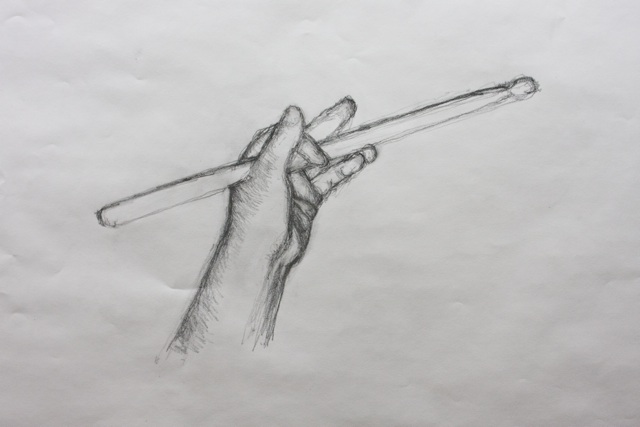There are four basic strokes to drumming:
- The Up-Stroke: Stick starts low and ends high, using a whipping motion
- The Down-Stroke: Stick starts high and is stopped low
- The Tap: Stick starts low and ends low
- The Legato (or “long”) Stroke: Stick ends starts and ends at the same height
On the down-stroke, you freeze the stick while it’s low. Naturally, it will rebound back if you don’t catch it (…this would be a legato stroke). After the down-stroke, you’re ready for the low tap. Then you start low and, using a whipping motion, bring the stick back up for the accent.
Above is a simple exercise to work the whipping motion of up- and down-strokes. Play it on each hand, no alternating sticking. The whipping motion isn’t something to be forced. It can be worked on, yes, but it should be the way you naturally attack an accent.

Finally, here’s a general exercise to work the four different strokes:
When you play the taps, remember that just because it’s a lower stroke doesn’t mean to sacrifice sound quality. Keep a solid sound, even at low heights. Also, especially in the first two measures, watch that the accents/taps are consistent. Watch that you don’t gradually lower the stroke after so many notes. The change needs to happen instantly. On the “&” of count 2 (the fourth note) you play an accent, which is higher, and on the next note you’re using a tap. BAM! Instant height change.
I consider this to be a “building block” of drumming. These strokes are even more basic than rudiments, as you can really improve your rudiment-playing by working on this. (Example: the whipping motion helps all flam-related rudiments, because you’re going from high to low in small amounts of time.) And they say rudiments are the beginning…
~Bianca.



